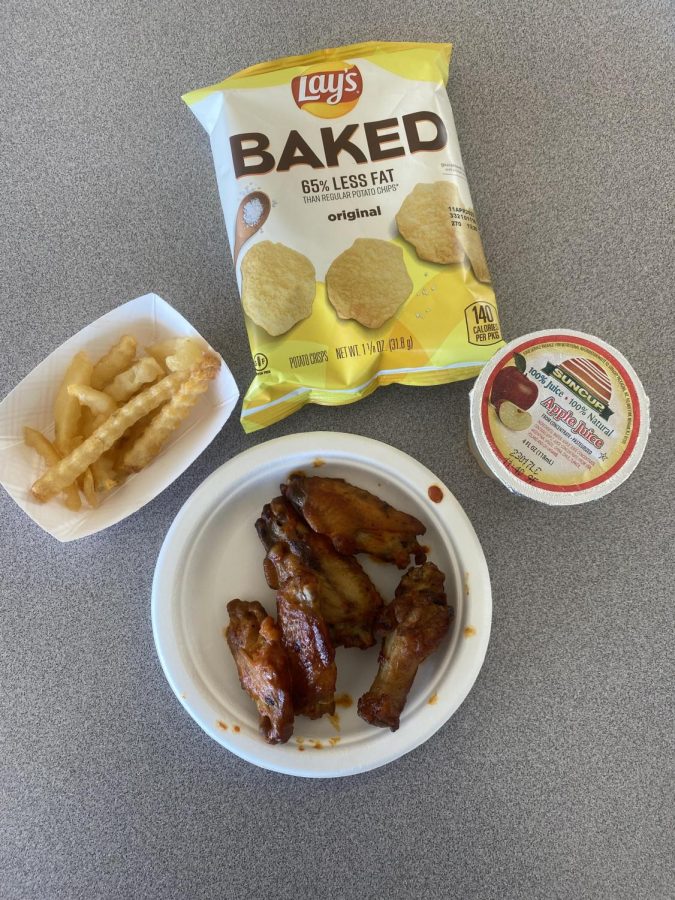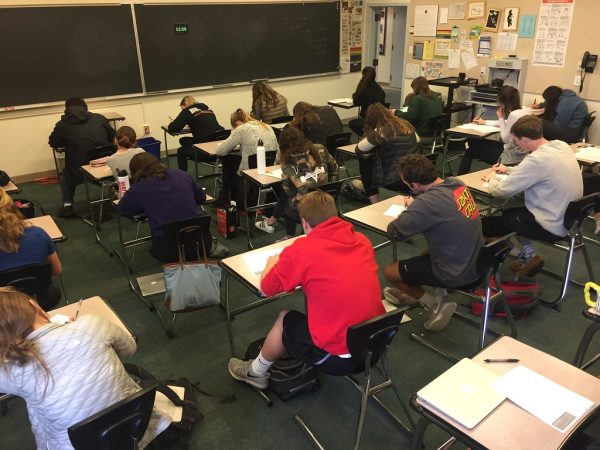How Nutritious Are the Meals at Pennridge?
`
School lunches are meant to be a nutritious option for students. Most students can’t find the time to eat in the mornings or pack a lunch, so they rely on school meals. They may also not have food at home or come from a financially stable household.
The USDA, US Department of Agriculture, requires various vegetables and fruits to be served throughout the week, which can be fresh, frozen, dried, or canned. If the students please, they can replace the fruit or vegetables with 100 percent fruit juice. It is necessary to provide meat or protein, including chicken, beef, sausage, and bacon; alternatives are not required. To complete the meal, school cafeterias must also sell milk, not offering any dairy-free products.
Pennridge High School lunches are available to students for $3.25, including the main course, a side of fruit, vegetables, milk, or juice. If a family may need help paying for meals, they can apply for a reduced price, cutting the cost to 40 cents. After a week of eating school lunches at full price, students pay a total of $16; $585 total for the full year. This is $50 worth of food every month. If they are paying a reduced price, the total will be $2; $72 a year with a reduced price. Students can enhance their meals with chips or ice cream, which is an additional cost of $1. Baked chips are offered, supposedly making them a healthier option. Students may purchase chips, fruit snacks, Rice-Krispy treats, and ice drinks from vending machines.
Pennridge lunches consist of some sort of chicken every Thursday, followed by cheese pizza every Friday. However, if students choose not to have the main meal, they can choose from wraps, salads, sandwiches, or Uncrustubles, all costing the same. Addy Wyernski, a senior at Pennridge says, “A lot of the food is questionable, and the meals don’t often taste good. They only really taste good when I’m really hungry.” The cafeteria mainly sells fried foods and has a limited amount of healthier snacks, defeating the purpose of nutritious meals. Wyernski continues to say, “Sometimes I feel like I am not getting every food group from the meals; there are a lot of unhealthy options.”
The majority of the fruit and vegetables the cafeteria offers look as if they are old and have been out for days since they sit out in open containers. Wyernski, states “I normally choose a juice because many of the sides aren’t appetizing. The vegetables and fruit don’t look fresh.”
Over the course of a week, each meal the cafeteria served was tried and evaluated by student journalists. On Thursday, Feb. 2, school lunch was buffalo chicken wings, accompanied by apple juice, and french fries. There were no complaints about the wings until a hair was found on top of one of them, making the fries the more enjoyable part of the meal. On Friday, Feb. 3, cheese pizza was served, which was described as “bland and crumbled apart with every bite”. On Monday, Feb. 6, the meal choice was baked ziti with a garlic knot, but a chicken caesar wrap was chosen instead. The wrap was bland, the caesar dressing was brown, and the chicken crumbled apart, which was quite unusual. On Feb. 7, students were offered a barbeque chicken sandwich along with a side of fries and onion rings. The sandwich contained nearly 2,000 mg of sodium, not including fries or onion rings, becoming the majority of the recommended intake of 2,300 mg. The chicken sandwich had an interesting texture, but the taste was fine. The more favorable part of the meal was the fries.
The serving sizes of the meals often vary among students. Some may get more food in their lunch than others. Luke Mastrogiovanni, a senior at Pennridge who often purchases school lunches says, “One flaw is the serving size. Some meals aren’t even meals; it’s a small container containing two to three pieces. I don’t want to pay $3 if I’m not getting a proper serving size.”
School lunches are not fulfilling their nutritional needs. Although they are meeting their requirements, the food is often seen as unappetizing and is not favored amongst students.
Lux Concannon, Grade 12. Interests/hobbies include hanging out with friends and family, doing makeup, traveling, and camping. Lux plans to attend college...










